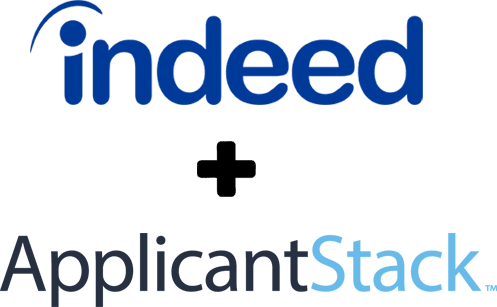Having an excellent business strategy and brand image won’t be enough to maintain a stable organization. When running a business, it’s easy to get caught up in focusing on annual targets and strategic theories. So much so that some may forget one of the most important facets of their business that keeps it afloat: the staff.
Companies often strive to hire and retain employees that will stay during the hard times and good. Unfortunately, pay alone won’t cut it anymore. Obtaining a loyal relationship with your hires requires give and take; benefits should go both ways.
To facilitate a dedicated workforce, it’s essential to implement proactive and purposeful processes that nurture your employees and make them feel valued. But why is employee retention important and what can your business do to protect against high attrition rates?
The Great Resignation
“The Great Resignation” is a key example of why retention is critical to a successful workforce. This event refers to the sudden boom in employee resignations that took off in April 2021. According to the Bureau of Labor Statistics, over 47 million Americans quit their jobs voluntarily, putting substantial financial strain on businesses around the world, primarily in the U.S.
Contrary to popular belief, the effects of the pandemic didn’t play a primary role in this mass departure. In fact, a Joblist survey found that it was actually unhappiness regarding how companies treated their staff in response to changing conditions (19%), alongside other key factors such as lack of pay or benefits (17%) and limited work-life balance (13%).
The newfound ability to work remotely and embrace a better work-life balance has driven workforces to explore the opportunities available to them. With this recent liberation, employees have started to demand more from their employers, combatting issues like:
- Toxic working relationships
- Negative company culture
- No growth opportunities
- Lack of recognition for contributions
- Expected — but unrewarded — overtime
A recent study by Gallup estimates that employee burnout results in $322 billion in lost productivity and turnover. These decreasing workforces should serve as an eye-opening reminder that the importance of employee well-being and satisfaction can’t be overstated. That’s why it’s important to identify ways your business can directly address this problem and mitigate high resignation rates.
7 Methods to Enhance Employee Retention
To help you form a robust plan of action, we’ve listed the key ways your organization can protect against a fragile workforce.
1. Identify Turnover Patterns
To understand where the issues lie in your organization, it’s essential to assess potential patterns in your turnover rates. This effort could outline a particular time of year or event that causes employees to hand in their notice. Here’s how you work this out:
First, calculate the average number of employees within a certain time frame.
Average number of employees = (Number of employees at the beginning of set time frame + Number of employees at the end of set time frame) / 2
Then, use the below formula to uncover your turnover rate.
Employee turnover = (Number of employee departures / Average number of employees) x 100
Without feedback from your team, you may not be able to effectively improve your systems. Aim to gather constructive criticism from current employees to identify the key areas to improve on. It’s also important to ask for feedback from new hires during the onboarding process so you can act on these problems promptly and refine their experience.
In recent years, businesses have seen familiar faces coming back to their workforce. If you’re aware of any returning individuals in your company, make sure to ask what drove them to resign. Consider employing leaving interviews to gain honest insight into this as well.
2. Offer Flexibility
The standard nine-to-five schedule that’s set in stone can pose an immediate red flag for employees in the modern era of working. Trusting your workforce to work a flexible schedule can show your company’s compassion and understanding of their personal needs. Consider implementing the following practices:
- Flexi-schedule: Employees are able to set their own working hours, e.g. 10am to 6pm.
- Remote work: Workers can work outside the office, preferably at home, for convenience.
- Job sharing: Two or more people work part-time to fulfill one full-time job role.
3. Provide Growth Opportunities
If you don’t offer clear pathways for development, it’s likely your workforce will search elsewhere for opportunities to move up. Supply skill-based training workshops and leadership development programs to promote growth and retention within your organization.
Educational opportunities aren’t just limited to standard employees; they also can be very valuable for managerial positions too. In fact, regular leadership training for managers can contribute to overall employee retention by ensuring that management is equipped with the skills necessary to build and maintain a motivated, supported workforce. Nurturing these positive working relationships will go a long way in forming a loyal and dedicated team.
4. Review Pay and Benefits
If your compensation packages remain static throughout the years, you’ll probably offer outdated benefits and pay low salaries for your employees’ expertise. While pay and benefits aren’t typically the primary cause for attrition, they can contribute to the last push that finalizes their decision to leave.
To combat this, regularly review market-leading salaries to compete with businesses in your sector. Also, update your benefits packet to align with modern working demands, such as flexible working hours. What’s most important is to advertise these perks to your workforce and potential new hires.
5. Recognize Your Teams’ Efforts
Employees only become motivated when they have something to work toward, whether that be a purposeful mission or a pat on the back. Companies with an established culture and reward practices in place boost their chances of maintaining an enthusiastic and driven workforce.
Inspiring staff members can help them feel valued, and in turn, make them likely to perform better. Facilitate positive engagement by encouraging employees to take on new projects and recognize them for their good performance and hard work. Employees who feel stimulated by their tasks and appreciated for their efforts have more potential to stick around.
6. Organize Team-Building Activities
Ensure that employees can effectively interact and collaborate with each other by incorporating fun team-building opportunities that foster communication. This may help new hires integrate within their team, let current staff members build stronger interpersonal relationships or alleviate any tensions within the office that might impact work performance. This could be as simple as a team lunch to a day outing.
7. Invest in Your Onboarding
An excellent way to boost retention is to nurture the employee journey of your new hires, ensuring they’re equipped with the tools, information and support they need to settle into the team. Make sure your onboarding lasts longer than one week to establish thorough training for new hires and provide ongoing support. A strong first impression makes a lasting difference, so enhancing your onboarding process will help you make a positive impact on your incoming recruits and make them feel welcome.
Unlock the Power of Onboarding Software
Onboarding software can make a significant difference in streamlining your overall onboarding process. An all-in-one software solution can be invaluable in enhancing communication among siloed teams and providing a single digital platform to store records securely.
With ApplicantStack Onboard, you get an extensive selection of features that support your onboarding procedures, such as customized onboarding checklists for each job position or work location. Here are just a few features our comprehensive tool has to offer:
- Automated checklists: Allocate tasks to new recruits and build checklists to ensure they’re on the right track.
- Hire import: For seamless integration, applicant data from the interview stage flows throughout the system, which eliminates duplicate data entry and saves time for your team.
- Electronic documentation: Streamline the signing process and eliminate heaps of paperwork by handing your crucial documents electronically.
- Automatic reminders: Receive automated reminders that keep both managers and new hires informed to reduce the risk of important tasks remaining incomplete and unaddressed.
- Document storage: Secure your company’s critical documents in a centralized location and organize them intuitively to upgrade your storage methods.
- Reporting: Gather feedback with standard and custom reports to monitor your onboarding metrics for constructive and valuable insights.
Empower your workforce, including those who have recently joined the team. Start your journey with ApplicantStack by signing up for your free trial today!
- 3 Tips to Improve Communication with Applicants - April 26, 2024
- Understanding Contract-To-Hire and How It Works - April 23, 2024
- Should Your Job Listings Include Salary Information? - April 19, 2024











